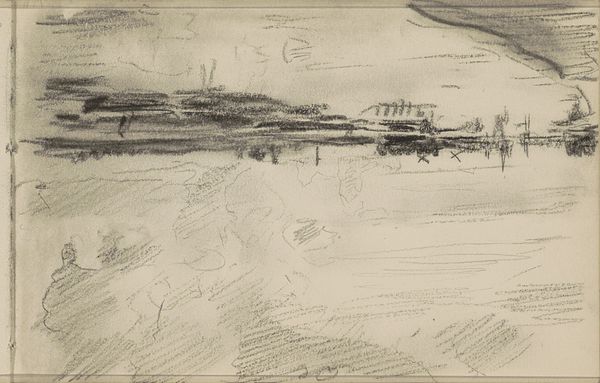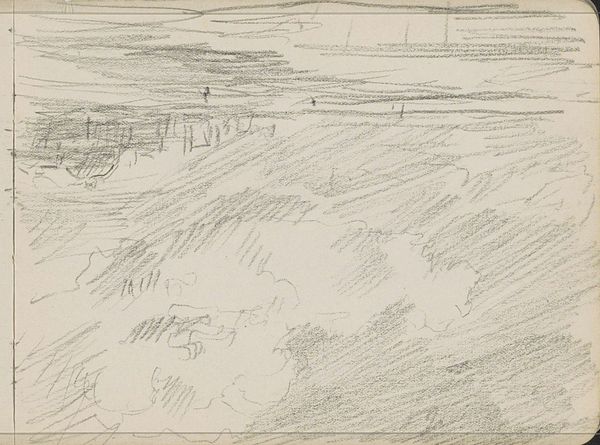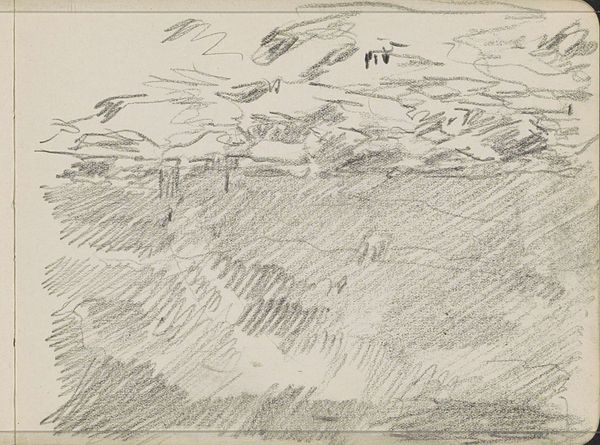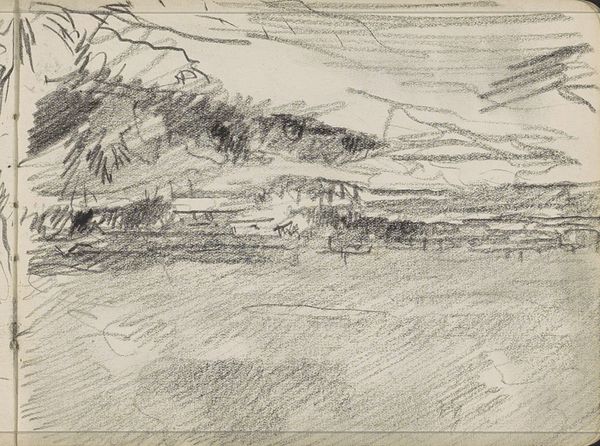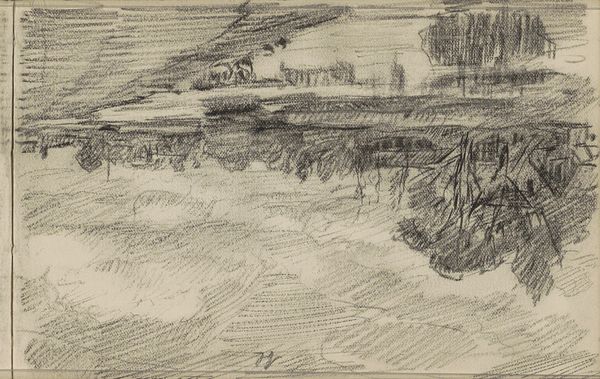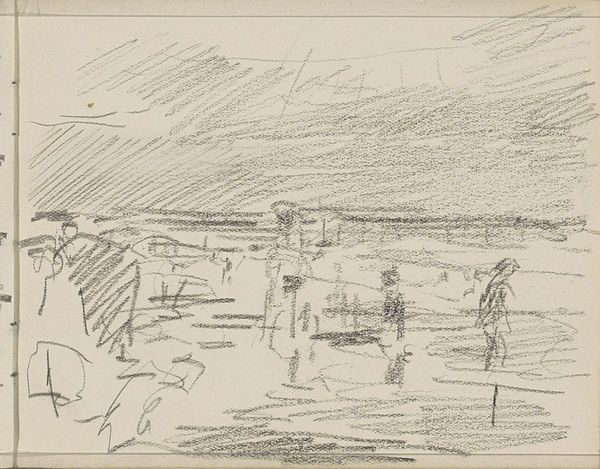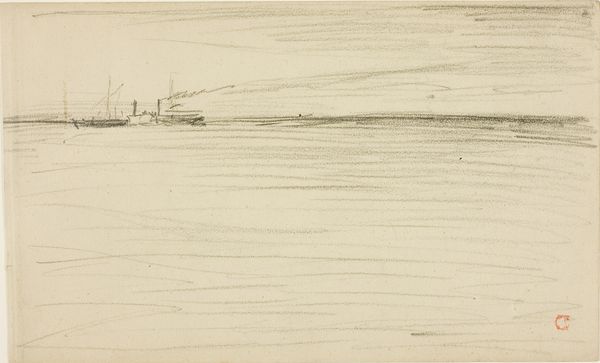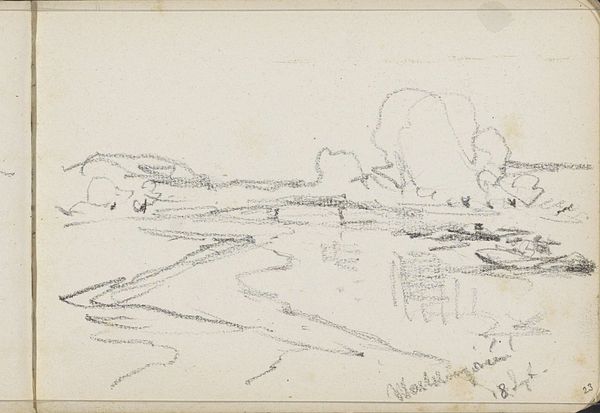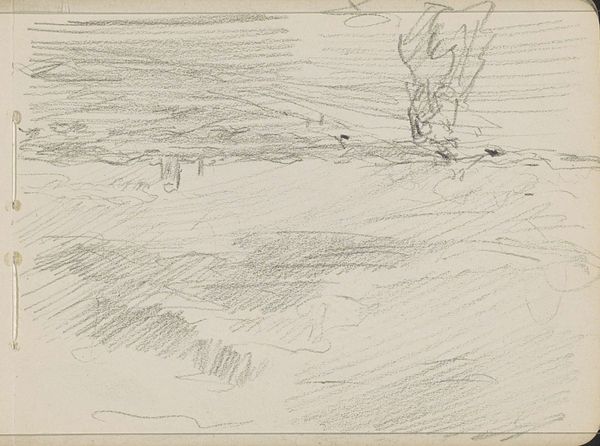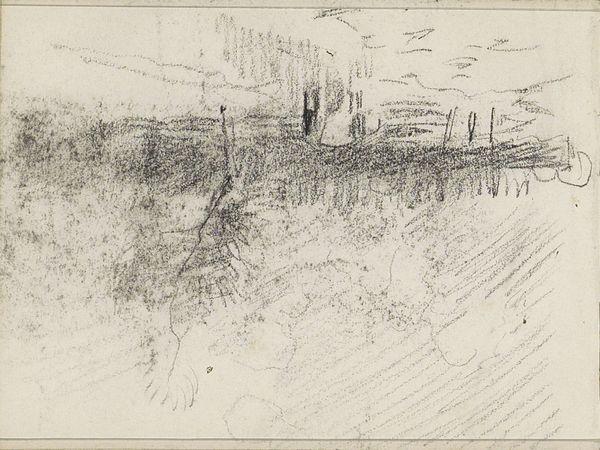
Copyright: Rijks Museum: Open Domain
Editor: This is "Figuren in de branding" (Figures in the Surf) by Johan Antonie de Jonge, made sometime between 1881 and 1927. It looks like a pencil and ink drawing, a quick sketch really. The light and shadow give a stormy feel to it. What can you tell me about this sketch? Curator: This is fascinating because it provides a glimpse into the artist's process. Look at the rapid strokes, the layering of the pencil – it speaks to the speed of capturing a fleeting moment. Think about the material constraints: paper and pencil, readily available, inexpensive. How does the accessibility of these materials democratize the art-making process? Editor: That's a good point. So, instead of focusing on the final product, we're looking at the very act of creation and how that shapes the work? Curator: Precisely. Consider the labor involved – the artist physically applying pencil to paper, making decisions about what to include, what to leave out. And why choose this scene? What commentary might de Jonge be making about humanity's relationship with nature through this rapid depiction? Editor: I see what you mean. The sketch feels almost industrial, despite being a landscape. It’s more about the work than the view. Curator: Exactly! And who was de Jonge creating this for? A patron, himself? Was this meant to be seen or was it more like a private study that helps us deconstruct the commercial act of the artist as genius? This transforms the meaning completely! Editor: This way of looking at it shifts my perspective entirely. It’s not just a landscape drawing; it’s a document of artistic labor. Curator: Indeed. By focusing on the materiality and the means of production, we uncover layers of meaning often overlooked in traditional art historical analysis. It encourages us to question the very definition of "art." Editor: I've definitely learned something new about seeing art today.
Comments
No comments
Be the first to comment and join the conversation on the ultimate creative platform.
